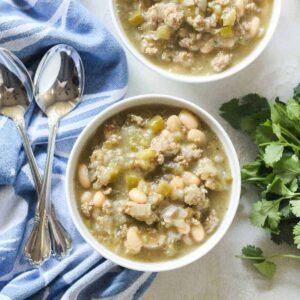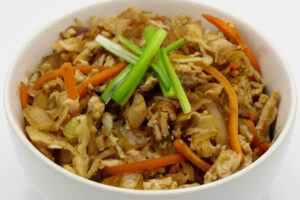What Will You Do With Those Thanksgiving Leftovers?
go.ncsu.edu/readext?1043036
en Español / em Português
El inglés es el idioma de control de esta página. En la medida en que haya algún conflicto entre la traducción al inglés y la traducción, el inglés prevalece.
Al hacer clic en el enlace de traducción se activa un servicio de traducción gratuito para convertir la página al español. Al igual que con cualquier traducción por Internet, la conversión no es sensible al contexto y puede que no traduzca el texto en su significado original. NC State Extension no garantiza la exactitud del texto traducido. Por favor, tenga en cuenta que algunas aplicaciones y/o servicios pueden no funcionar como se espera cuando se traducen.
Português
Inglês é o idioma de controle desta página. Na medida que haja algum conflito entre o texto original em Inglês e a tradução, o Inglês prevalece.
Ao clicar no link de tradução, um serviço gratuito de tradução será ativado para converter a página para o Português. Como em qualquer tradução pela internet, a conversão não é sensivel ao contexto e pode não ocorrer a tradução para o significado orginal. O serviço de Extensão da Carolina do Norte (NC State Extension) não garante a exatidão do texto traduzido. Por favor, observe que algumas funções ou serviços podem não funcionar como esperado após a tradução.
English
English is the controlling language of this page. To the extent there is any conflict between the English text and the translation, English controls.
Clicking on the translation link activates a free translation service to convert the page to Spanish. As with any Internet translation, the conversion is not context-sensitive and may not translate the text to its original meaning. NC State Extension does not guarantee the accuracy of the translated text. Please note that some applications and/or services may not function as expected when translated.
Collapse ▲Chances are you need to be thinking about what you will do with all the leftovers. I love leftovers. Some things just seem to be even better leftover. If you have company staying at your home for a few days now use a recipe using your leftover turkey.
To be sure that you and your guests will enjoy the wonderful leftovers you have planned, follow food safety guidelines for handling your turkey safely.
- The first rule of thumb, debone the turkey and refrigerate all leftovers in shallow containers.
- Gravy, stuffing and meat need to be stored separately from each other. It will be necessary to remove the stuffing from the bird and store it in a separate container. Remember you must debone your bird anyway.
- The carcass makes a wonderful soup base later. If you choose to save it, be sure to refrigerate or freeze it in a large zip-top baggie or other container.
- Use leftover turkey within 3 to 4 days and stuffing or gravy within 1 to 2 days; or freeze these foods.
- If you choose to freeze leftovers for longer storage, package items in freezer paper, freezer bags or heavy-duty aluminum foil. Proper wrapping will prevent “freezer burn,” those white dried-out patches on the surface of food that make it tough and tasteless.
- Date your packages and use the oldest ones first. Frozen leftovers should be used within 2 to 6 months for best quality.
- Cooked turkey may be eaten cold or reheated. When reheating your turkey in the oven, set the oven temperature no lower than 325 °F. Reheat to an internal temperature of 165 °F. Use a food thermometer to check the internal temperature. To keep the turkey moist, add a little broth or water and cover.
- If you choose to reheat the turkey in the microwave, cover your food, rotate it for even heating, and allow standing time. Check the internal temperature of your food with a food thermometer to make sure it reaches 165 °F.
Let’s really change up the flavors so that your leftover turkey is truly a “Planover” with a different appearance and flavor. Instead of the traditional sandwiches and pot pie use leftover turkey to make White Turkey Chili. Not only is it healthy, it is also quick. Likewise, I think you will enjoy the Turkey Egg Roll in a Bowl as an easy, delicious recipe using the small bits and pieces of the leftover turkey.
White Turkey Chili – Serves 8

Turkey White Bean Chilli
1 Tablespoon Extra Virgin Olive Oil
1/4 cup onion, chopped
2 cloves of garlic, minced fine
1 cup celery, chopped (optional)
4 cups cooked turkey, chopped
2 cans (15.5 oz.) Great Northern beans, drained and rinsed
2 cans (11 oz.) White corn, undrained
1 can (4 oz.) chopped green chilies
4 cups turkey or chicken broth
1 teaspoon ground cumin
Directions:
- Heat oil in a skillet over medium heat.
- Add onion, garlic and celery, cook and stir 2-3 minutes.
- Place all ingredients in a large saucepan (at least 4 quarts) and Stir well.
- Cover and cook about 15 minutes over medium heat stirring occasionally until thoroughly heated.
Nutrition Information per Serving: Calories 242, Fat 3g, Saturated Fat 1g, Protein 14g, Carbohydrate 43g, Fiber 8g, and Sodium 113mg.
Turkey Egg Roll in a Bowl – Serves: 4

Turkey Egg Roll in a Bowl
This recipe offers a quick, healthy twist on a classic egg roll. The fragrant aromatics (onions, garlic, and ginger) add a familiar flavor to this classic food. Bag coleslaw or broccoli mix makes prep time super easy. Feel free to add peppers, chilis, or hot sauce to up the heat. Serve with a side of brown rice to create a well-rounded meal.
1/2 Tablespoon extra-virgin olive oil
1/2 onion, finely diced
1 1/2 teaspoons fresh ginger, minced or grated
2 cloves garlic, minced
2 cups cooked leftover turkey, diced
2 carrots, peeled and shredded (about 1 cup)
1 (14-ounce) bag coleslaw or broccoli slaw mix
3 Tablespoons low-sodium soy sauce
1 Tablespoons rice vinegar
1 teaspoon toasted sesame oil (optional)
2 green onions, sliced
2 cups of cooked brown rice
Directions:
- Have all your ingredients measured and ready as you will be flash cooking with high heat.
- Heat olive oil in a large frying pan or wok on high until hot and quickly add onion and cook until softened slightly, 1 to 2 minutes.
- Add ginger and garlic, stirring until fragrant, about 1 minute.
- Add leftover cooked chopped turkey and cook until heated through.
- Stir in carrot and coleslaw mix, cooking until slightly softened. About 2 minutes
- Add soy sauce, rice vinegar, and sesame oil, if using. Stir until everything is thoroughly coated in the sauce.
- Turn off the heat and cook until cabbage and carrots are starting to soften.
- Top with green onions and serve with brown rice, Enjoy!
Sources for this article NC Extension Food and Nutrition educational program. For more information about the Foods and Nutrition please contact Louise L. Hinsley, Extension Agent, Family Consumer Science at the Beaufort County Center of N.C. Cooperative Extension, 155 Airport Road, Washington, 252-946-0111.



